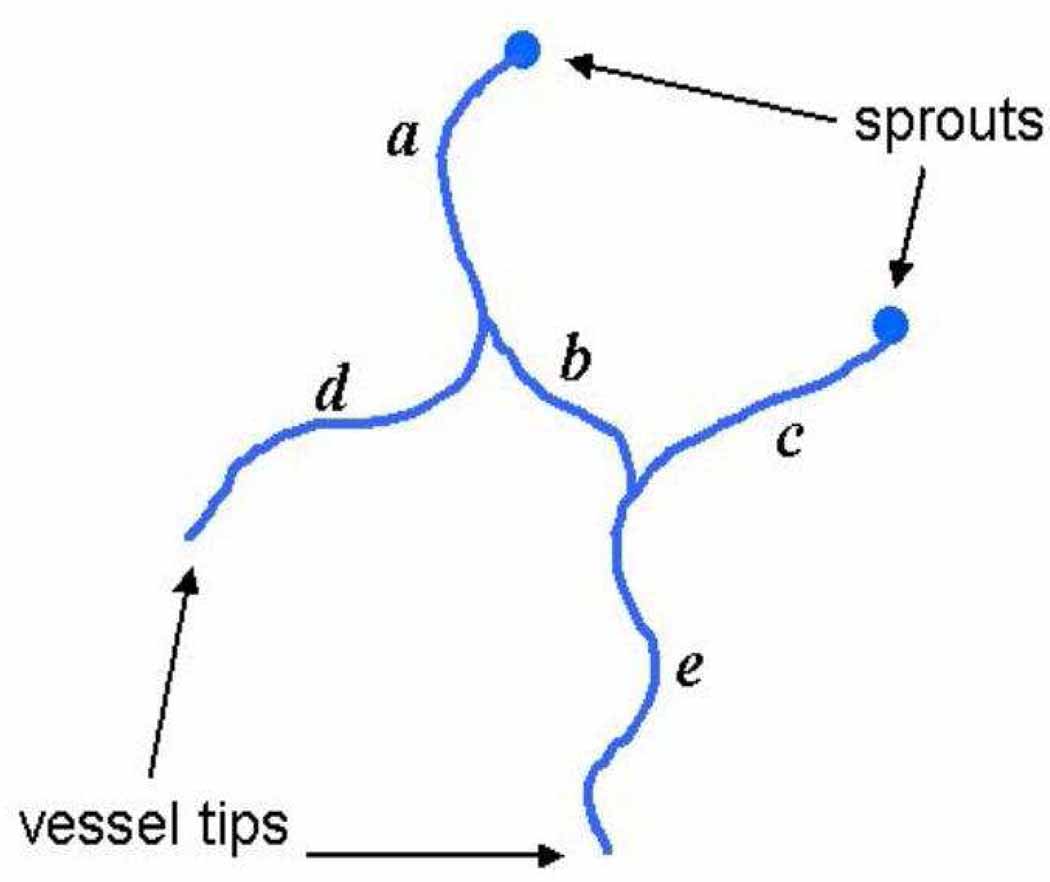Fig. 3.
Example of vessels and sprouts. The diagram shows two sprouts and five vessels labeled a through e. A sprout originates from a blood-conducting host vessel (not shown) in response to angiogenic stimuli. In this example, segments a, b, and c form one loop, i.e., they connect two sprouts and can therefore conduct blood. Segments d and e are open, i.e., without flow. Thus, there are 3 looped (a, b, and c) and two unlooped (d and e) vessels. In the case that segment b were to be crushed by the tumor solid pressure, such as may occur during high proliferation of a viable cell species, the flow would shutdown in segments a and c in addition to b. A shutdown would also occur if segments a or c were to be crushed.

